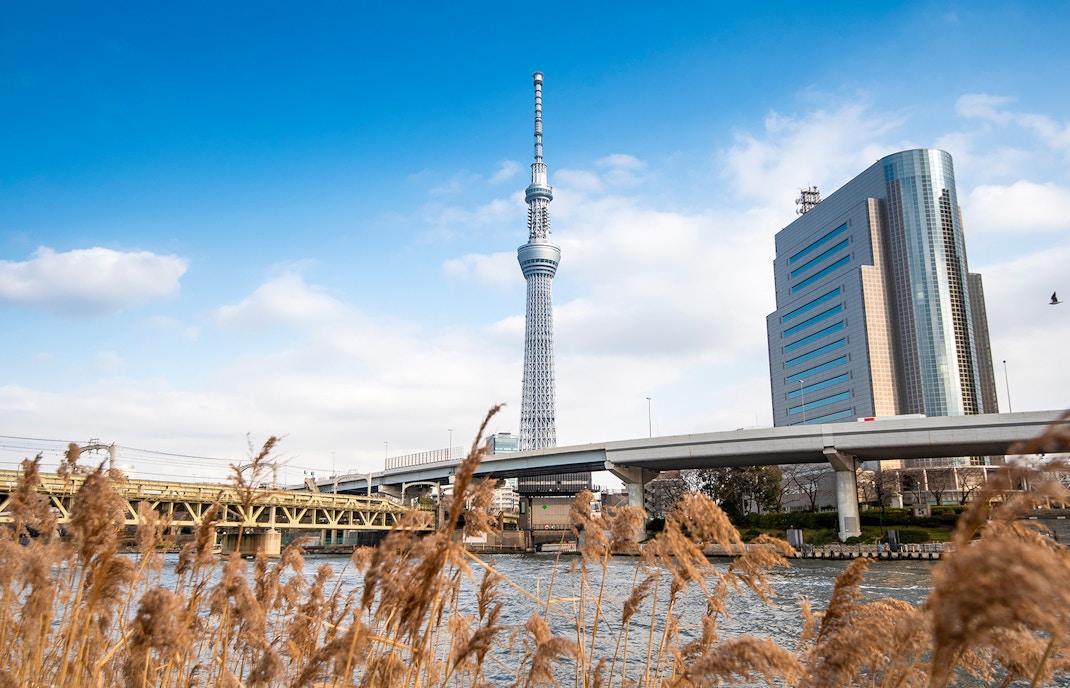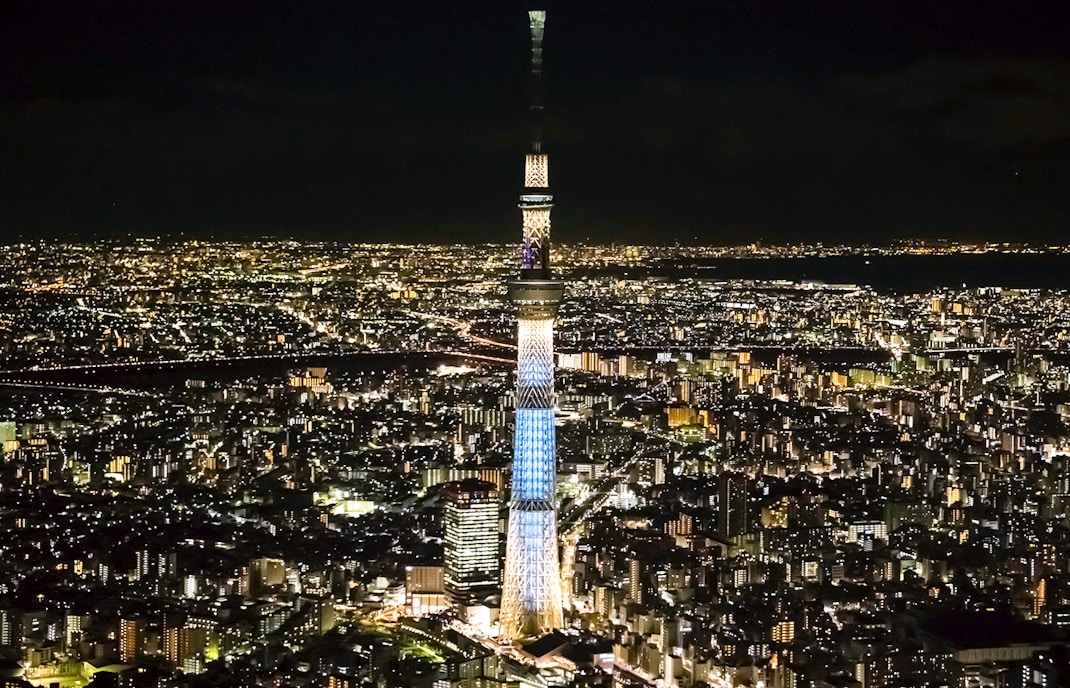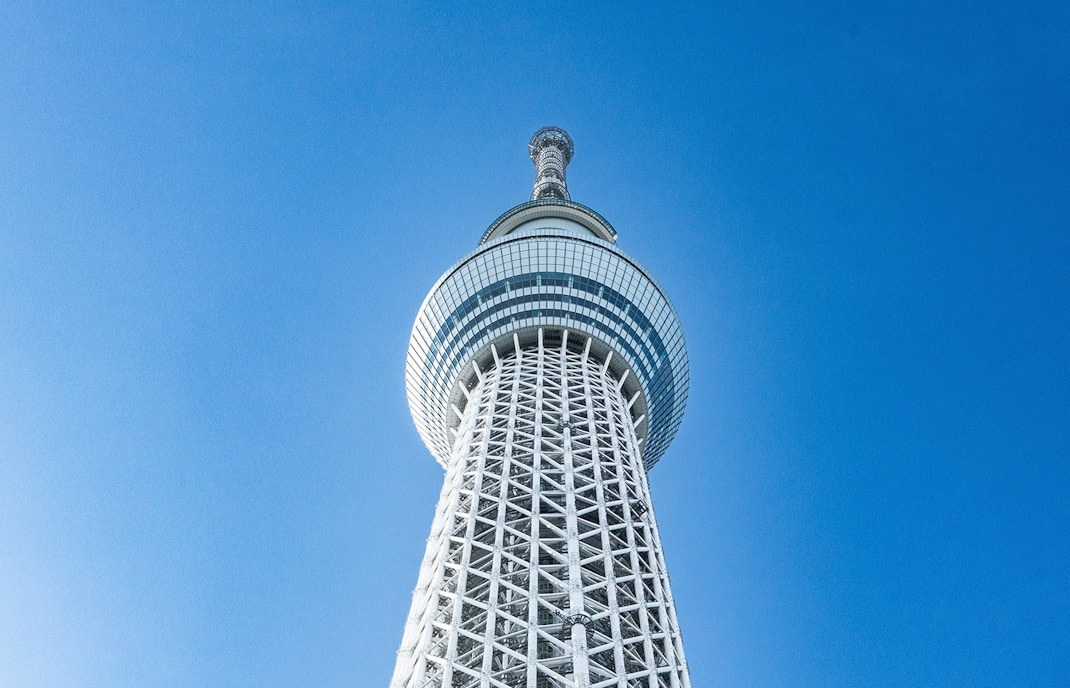Tokyo Skytree’s design merges neo-futuristic form with traditional 'Sorakazari' Japanese geometry used in Japanese shrines and temples, shifting from a triangular base to a circular tower as it rises.
Architectural highlights of Tokyo Skytree
If you are visiting Tokyo Skytree, here are a few architectural highlights that’ll pique your interest:

Fusion architecture

Seasonal displays

High-speed elevators

